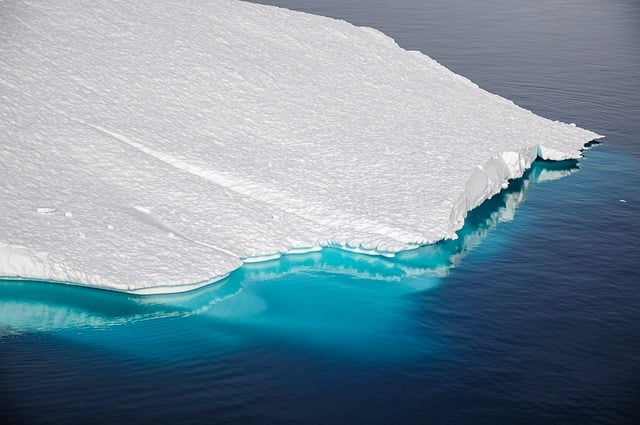Cold therapy, including ice packs, cold water immersion, and cryotherapy, offers significant relief for migraines by constricting blood vessels and reducing inflammation. Ice packs provide direct, accessible relief, while cryotherapy offers more intense, long-term benefits. Effective application techniques include strategic placement of ice on specific areas, alternating between cold and heat, and exploring intensive methods tailored to individual needs. Hydration, a calm environment, and relaxation techniques enhance overall effectiveness, with the goal of reducing migraine frequency and intensity for improved quality of life.
In the quest for effective migraine management, cold therapy has emerged as a powerful tool. This holistic approach to pain relief leverages the calming effects of cold to alleviate intense migraine symptoms. By understanding the intricate relationship between migraine triggers and cold therapy, individuals can harness its potential. From traditional ice packs to innovative cryotherapy and immersive cold water experiences, this article explores diverse techniques, unearths the scientific backing for their efficacy, and provides practical tips to maximize the benefits of cooling treatments for headache management, offering a promising natural remedy for those suffering from migraines.
Understanding Migraine Triggers and Their Relationship with Cold Therapy
Migraines can be debilitating, and understanding their triggers is a vital step in managing this condition. Many people have discovered that cold therapy—such as applying ice packs or immersing oneself in cold water—can offer significant relief from migraine pain. This is because cold has been shown to constrict blood vessels, reducing inflammation and nerve sensitivity associated with headaches. The application of a cold compress can provide instant migraine pain relief by numbing the affected area, offering a natural way to alleviate symptoms without harsh medications.
Additionally, various studies have explored the benefits of cryotherapy (extreme cold therapy) for migraines, where individuals are exposed to freezing temperatures for short periods. This extreme cooling technique has been found to significantly reduce migraine frequency and intensity over time. Incorporating simple cooling techniques like ice packs or even a cold shower during a migraine attack can serve as an effective, quick remedy. By identifying personal migraine triggers and incorporating these cool-down strategies, individuals may find they experience fewer and less severe migraines, improving their overall quality of life.
Different Cold Therapy Methods for Migraine Relief: Ice Packs, Cryotherapy, and Cold Water Immersion
Cold therapy has emerged as a powerful tool in the arsenal against migraines, offering natural and effective relief for many sufferers. Among various methods, three stand out for their effectiveness in reducing migraine pain: ice packs, cryotherapy, and cold water immersion.
Ice packs remain a popular and readily accessible option for migraine relief. Applying an ice pack to the forehead, temples, or back of the neck can constrict blood vessels, blocking pain signals and reducing inflammation. This simple yet effective cooling technique is often the first line of defense for many people experiencing migraines. Cryotherapy, on the other hand, involves more intense cold exposure, typically in a specialized chamber. It accelerates the cooling process, leading to rapid vasoconstriction and reduced neurogenic inflammation, offering potential long-term benefits for frequent migraine sufferers. Cold water immersion is another extreme method where individuals submerge themselves in icy water, triggering a similar response as cryotherapy but with varying levels of comfort and accessibility depending on personal preferences.
The Scientific Basis for the Benefits of Cold Compresses in Headache Management
The scientific community has long recognized the benefits of cold therapy in managing headaches, particularly migraines. Cold compresses work by slowing down nerve impulses and reducing inflammation in the affected areas. When applied to the head, neck, or even the whole body through techniques like cold water immersion, these treatments can significantly alleviate migraine pain. The direct application of ice packs for migraine relief has been shown to reduce muscle tension and constrict blood vessels, thereby lessening the intensity and frequency of headaches.
Cryotherapy, including short durations of extreme cold exposure, has emerged as a game-changer in headache management. Studies suggest that these cooling techniques can modify pain signal transmission, offering long-lasting migraine pain relief. Moreover, regular use of cold therapy for migraines can lead to a reduced reliance on medication, avoiding the potential side effects associated with frequent drug intake. This natural approach to headache relief is gaining traction as an effective and non-invasive strategy, complementing traditional treatments and enhancing overall quality of life for those suffering from migraines.
Effective Application Techniques and Tips for Maximizing Cold Therapy Success
Effective Application Techniques and Tips for Maximizing Cold Therapy Success
When employing cold therapy for migraines or other severe headaches, proper application techniques are key to achieving optimal results. For instance, using an ice pack strategically can provide significant migraine relief. Apply the ice pack directly to the affected area, focusing on the temples, forehead, and back of the neck – common trigger points for migraine pain. Alternating between cold and heat (via a warm compress) in a 10-minute cycle has also shown promise in alleviating migraine symptoms. For more intensive treatment, consider cryotherapy or cold water immersion. These methods, though intense, offer rapid relief by constricting blood vessels, reducing inflammation, and numbing pain receptors.
To maximize the benefits of cold compress for headaches, ensure your body is prepared. Before applying cold therapy, hydrate thoroughly to prevent dehydration which can worsen headache intensity. Additionally, create a calming environment free from distractions. Deep breathing exercises or gentle stretching before immersion can enhance relaxation and improve blood flow. Remember, individual responses vary; experiment with different cooling techniques for headaches until you find the most effective approach for your specific needs.
In conclusion, understanding the specific trigger points and leveraging various cold therapy methods like ice packs, cryotherapy, and cold water immersion can significantly alleviate migraine pain. The scientific basis behind cold compresses underscores their effectiveness in headache management. By employing effective application techniques, individuals can maximize the benefits of cold therapy for migraines, offering a simple yet powerful solution to find relief promptly.
